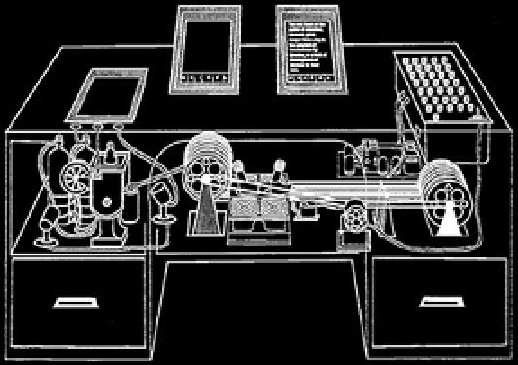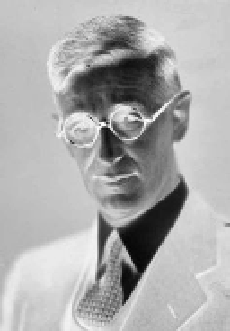Information Technology Reference
In-Depth Information
B.11.1. Vannevar Bush was born in 1890 in Massachusetts, attended Tufts College, and obtained his
PhD in engineering from MIT in 1917. He joined the MIT Department of Electrical Engineering two
years later and in 1927 started work on his Differential Analyzer - an analog computer for solving
complicated systems of differential equations. One of his graduate students was Claude Shannon
whose MIT master's thesis on using electrical relays to implement Boolean logic operations is one
of the most-cited MIT theses. During World War I, Bush had been frustrated by the poor coopera-
tion between the U.S. military and civilian scientists. When World War II broke out, he persuaded
President Roosevelt to set up the National Defense Research Committee with him as chairman.
Bush later said “if he made any important contribution to the war effort at all, it would be to get the
Army and Navy to tell each other what they were doing.”
B1
Two of the most celebrated technological
successes that were overseen by Bush were the Manhattan Project - that produced the atomic bomb -
and the “proximity fuse” - a fuse inside an artillery shell that contained a miniature radar system so
that the shell would explode when near the target. After the war, Bush's report to President Truman -
“Science: The Endless Frontier” - advocated federal funding of civilian basic research and resulted in
the establishment of the National Science Foundation in 1950. He also wrote a second famous paper
in 1945 that was titled “As We May Think.” It is surprising how many of the visionary ideas described
in this paper are still relevant in the era of the World Wide Web, almost seventy years later.
Fig. 11.1. An illustration of the
memex - a personal information
system envisaged by Vannevar Bush
to help users cope with the increasing
flood of information.
Although the specific technology proposed by Bush to create the memex is now
hopelessly out of date (see
Fig. 11.1
), his idea of recording “links” to represent
associations between two pieces of information was the inspiration for today's
World Wide Web. By using such links, Bush thought we could mimic the work-
ing of the human mind in how it follows a trail of associations. This is how he
imagined the memex machine working:
The owner of the memex, let us say, is interested in the origin and properties
of the bow and arrow. Specifically he is studying why the short Turkish
bow was apparently superior to the English long bow in the skirmishes
of the Crusades. He has dozens of possibly pertinent topics and articles in
his memex. First he runs through an encyclopedia, finds an interesting
but sketchy article, leaves it projected. Next, in a history, he finds another
pertinent item, and ties the two together. Thus he goes, building a trail of


Search WWH ::

Custom Search